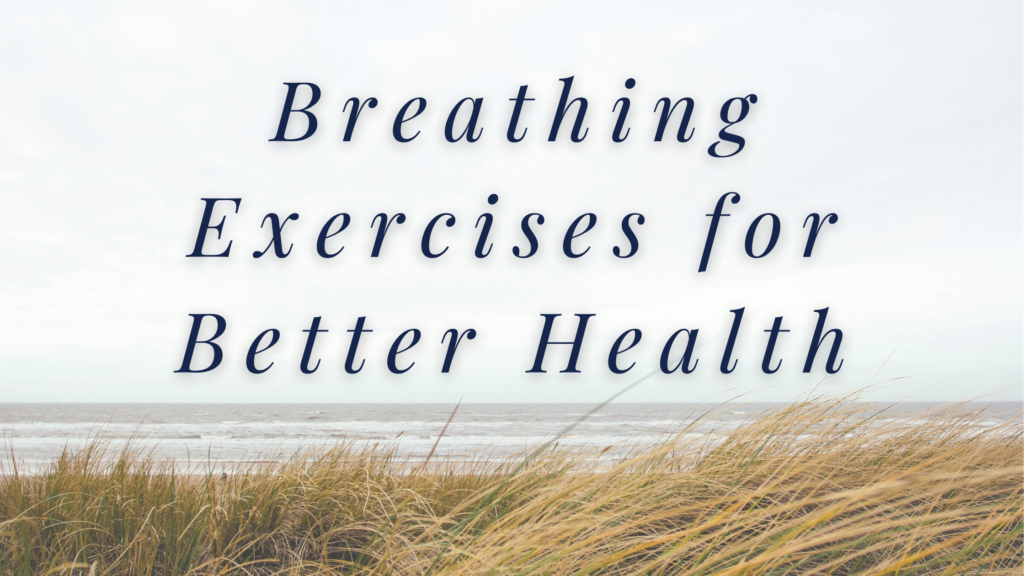Breathing Exercises for Better Health
In the following blog installment, we are highlighting three breathing exercises to help you improve your mental and physical health. While many of us are aware that deep breathing can help relax us, there are many other benefits! John Hopkins physical therapist, Peiting Lien, says “Deep breathing can help restore diaphragm function and increase lung capacity.” The goal is to build up the ability to breathe deeply during any activity, not just while at rest.” Keep reading to learn about these popular breathing exercises that will help you relax, restore diaphragm function, and increase your lung capacity. Before adopting these practices, we recommend consulting with your healthcare provider to ensure this is the right fit for you. The Wim Hof Method Breathing is popular for its ability to increase resilience towards everyday stress. “By practicing the breathing exercises, you are releasing more energy, influencing your nervous system and changing various physiological responses.” We recommend referencing the official website for the Wim Hof Method Breathing to gain a deeper understanding from the source. The below steps are taken directly from the Wim Hof website. Assume a meditation posture: sitting, lying down — whichever is most comfortable for you. Make sure you can expand your lungs freely without feeling any constriction. Belly breathing (also called “abdominal breathing” or “Diaphragmatic breathing”) encourages full oxygen exchange. This type of breathing exercise has many benefits, such as encouraging the parasympathetic system response of calming, as well as increasing the supply of oxygen and nutrients to cells throughout the body. Get started by following the steps below, taken directly from Harvard Health Publishing. Lie on your back on a flat surface (or in bed) with your knees bent. You can use a pillow under your head and your knees for support, if that’s more comfortable. Place one hand on your upper chest and the other on your belly, just below your rib cage. Breathe in slowly through your nose, letting the air in deeply, towards your lower belly. The hand on your chest should remain still, while the one on your belly should rise. Tighten your abdominal muscles and let them fall inward as you exhale through pursed lips. The hand on your belly should move down to its original position. This breathing exercise is recommended to be practiced for five to 10 minutes, several times a day if possible. For visual learners, check out the below video that helps guide you through the belly breathing exercise. The 4-7-8 Breath, aka the Relaxing Breath, is a yoga breathing technique demonstrated by Dr. Weil to help relieve stress, reduce cravings, and to help you fall asleep. Get started by following the below steps taken directly from Dr. Weil’s website. You will begin the exercise with an exhale completely through your mouth, making a whoosh sound. Close your mouth and inhale quietly through your nose to a mental count of four. Hold your breath for a count of seven. Exhale completely through your mouth, making a whoosh sound to a count of eight. This is one breath cycle. Now refer back to step 2 and repeat the cycle three more times for a total of four cycles. Practice at least 2x/day but never more than 4 cycles at a time for the first month. After a month of consistent practice, you can increase up to 8 cycles but never more than 8 cycles at a time. After 2-3 months of regular practice, this breath may lower heart rate, improve digestion, lower blood pressure, and relieve anxiety. Check out the below video for a helpful explanation from Dr. Weil himself! There are many beneficial breathing exercises apart from the ones featured in this article. What is important is finding the one that works for you. If you found any of the listed breathing exercises helpful, we would love to hear in the comments below! And if you enjoyed today’s article, be sure to visit our blog for more fun and educational content! You can also check out all “sleep aid” related articles geared towards providing useful tools for a better night’s sleep! Questions? Give our clinic a call at 614-396-8286 or click here to contact us online! Last but not least, no content from our blog articles should ever be used as a substitute for direct medical advice from your doctor or other qualified clinician.Breathing Exercise #1: Wim Hof Method Breathing
Step 1: Get Comfortable
Step 2: 30-40 Deep Breaths
Step 3: The Hold
Step 4: Recovery Breath
The below video is a great tool for beginners looking for gentle guidance at a slower pace.
Breathing Exercise #2: Belly Breathing
Step 1:
Step 2:
Step 3:
Step 4:
Breathing Exercise #3: The 4-7-8 Breath
Step 1:
Step 2:
Step 3:
Step 4:
In conclusion:



